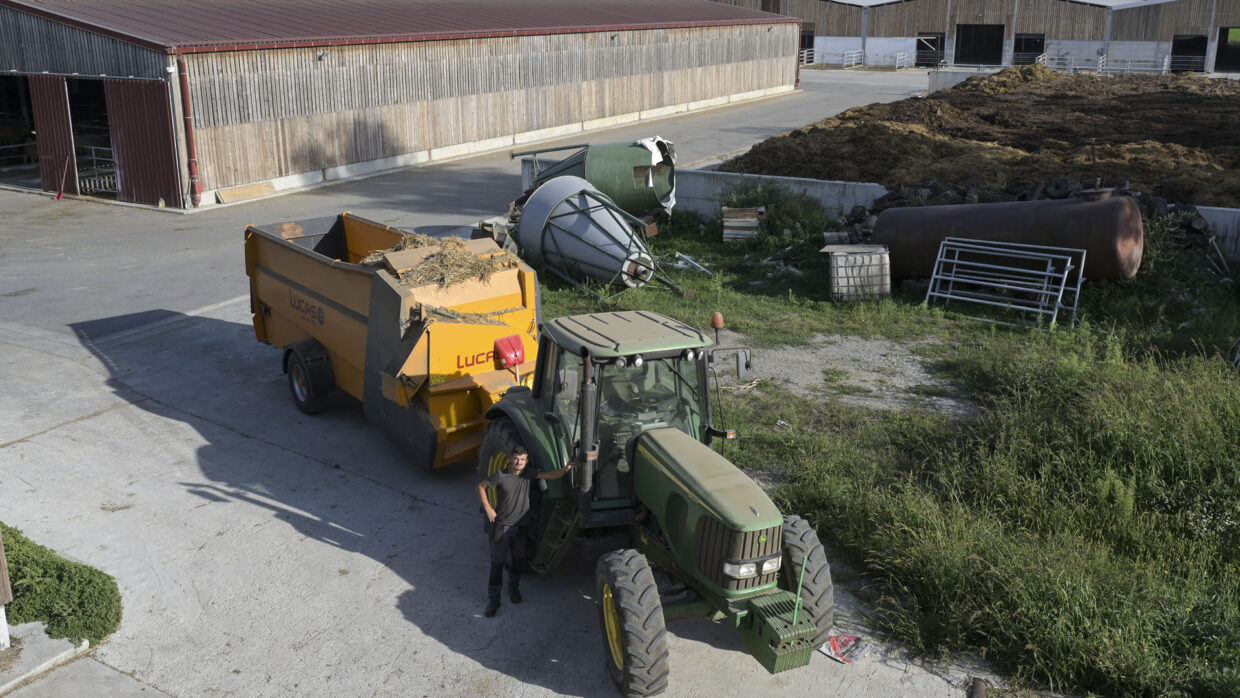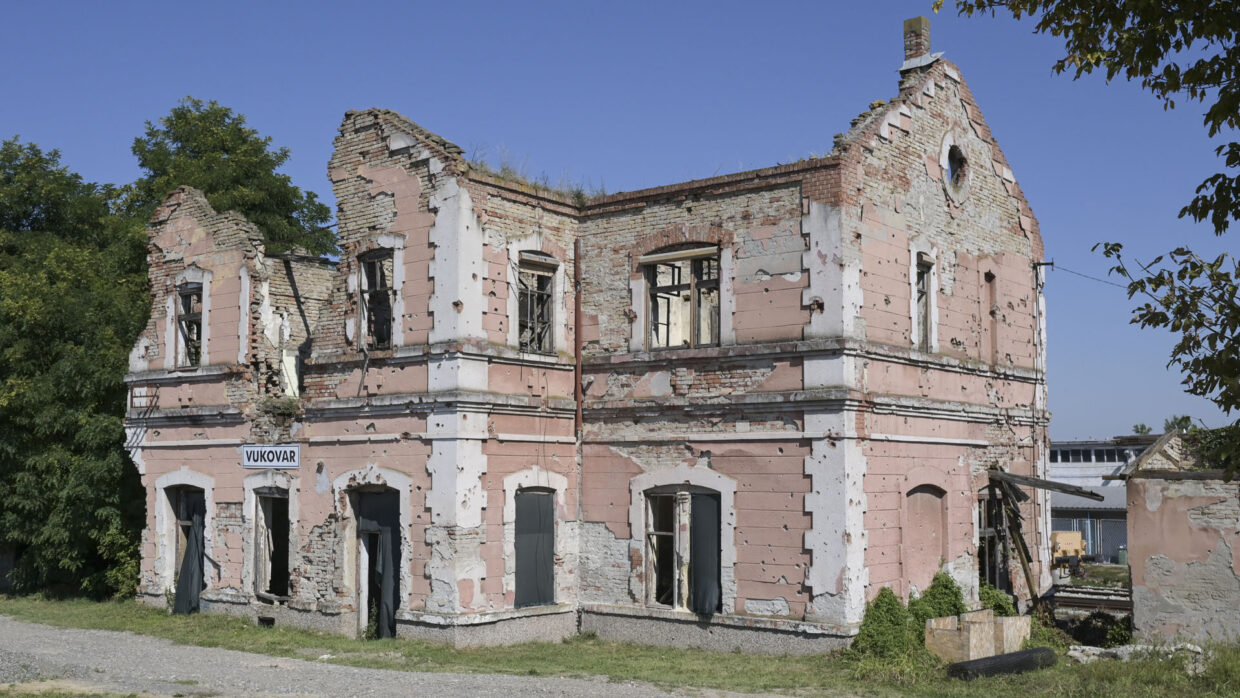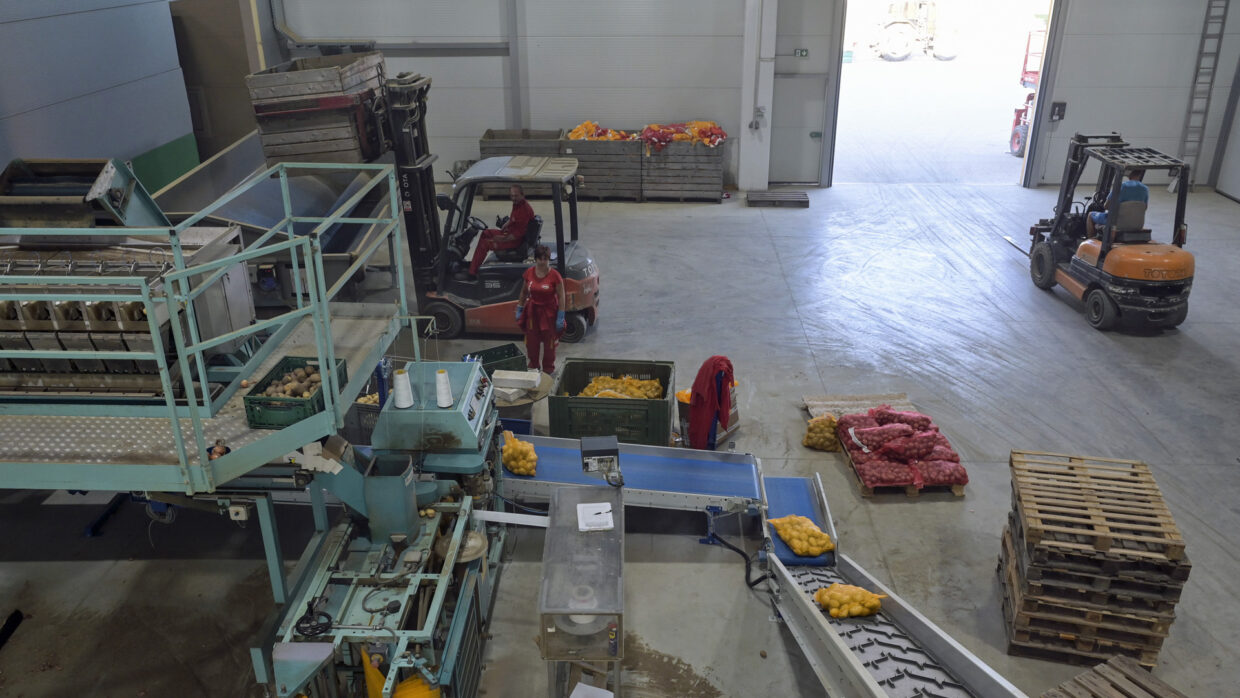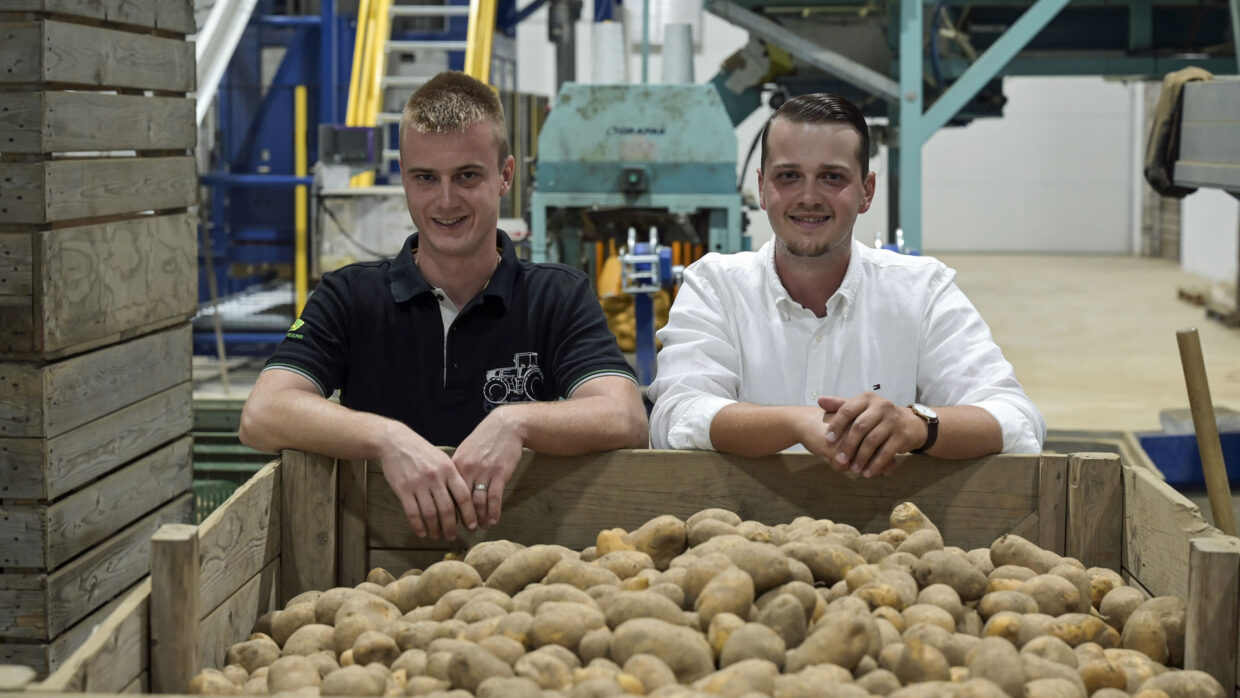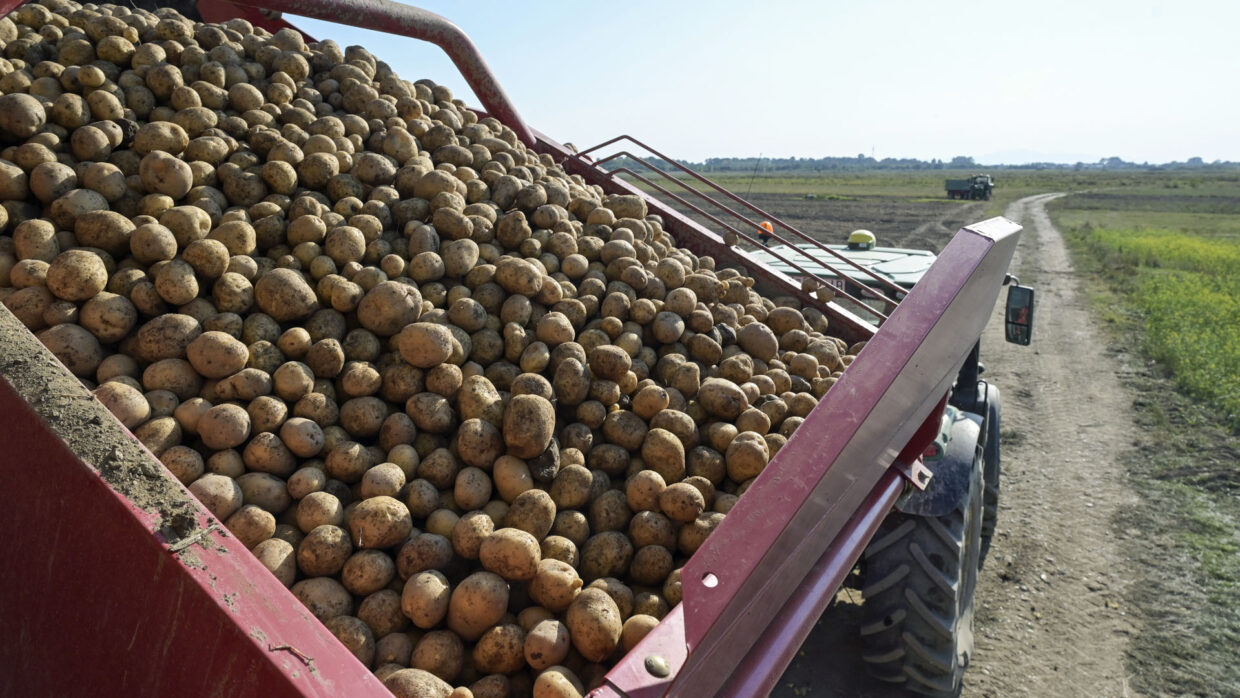“Agriculture plays a major role in the overall development of this region,” emphasises Ivan Pavlović from John Deere dealer Novocommerce International in the Croatian town of Osijek. Around 30km from the Danube and neighbouring Serbia on the European Union’s eastern border, the mid-sized town is located only a few kilometres away from farmer co-operative Fermopromet’s base in Branjina.
In co-op owner Siniša Ćuk’s office we take a shot of quince liquor to start off the day’s proceedings. The self-distilled liquor is excellent – but one shot is enough at that time of the day. Mr Ćuk and his 50 employees farm around 3,000ha in Croatia and a further 3,000ha over the Croatian-Serbian border in Vojvodina.
At the farm, they follow a classic crop rotation: Wheat, barley, maize and rapeseed. Rapeseed has been scarce in 2021 because of problems with herbicide approvals, says Mr Ćuk. “But wheat and maize are doing all the better for it. This year we’re harvesting up to 13t/ha of grain maize.”
Soyabeans, which he has been growing since the 1980s, also seem to be doing well. “Right now we’re expecting prices of around €700/t (£597/t),” Mr Ćuk boasts outside the company’s soyabean silos. Here, their soyabeans, not yet traded as “Donau-Soja”, are being dried and stored until a favourable sales date presents itself.

In the vicinity of Visnjica, on a former estate of the Princely House of Schaumburg-Lippe, there is now a large cattle ranch
Challenges for dairy farms
While large arable farms like Fermopromet are currently benefiting from rising commodity prices, rural dairy farms like Ivan Kvetek’s in Gorica face precisely the opposite problem: Milk prices have remained low for several years. This is one of the reasons why many dairy farmers have given up milk production all together. Zdenko Ivkić of the Croatian Agency for Agriculture and Food (HAPIH) estimates that about a third of all dairy farms have given up milking in the past 10 years. As a result, there are only 4,000 dairy farms still producing milk in Croatia, approximately 800 of which are found in Slavonia alone. An additional 10,000 part-time farms exist, but they only produce enough to meet their own and local needs.

Young fattening bulls in well air-conditioned barns.
And there are no signs to suggest that the situation will improve any time soon. After the very dry and hot summer of 2021, the price of milk is a mere 31c/litre (26.5p/litre). “Maybe we’ll get 38c (32.4p) this winter,” Mr Kvetek remarks, as he gives us a tour of his farm to which he relocated several years ago. Together with his father, he farms around 100ha, 15ha of which are dedicated solely to sunflower cultivation. He even hires a combine specifically for sunflower threshing.
As staple feed for the cows, Mr Kvetek relies mainly on alfalfa hay. Large bales of the stuff can be seen stacked beneath semi-circular tents that he threw up himself behind his cow barn. In passing, you can’t help but notice that his herd of 40 cows, the sturdy local Simmental breed, seem full of life. The cows are kept in a modern barn with pushrod manure removal and are milked by a Lely robot. “We are very satisfied,” Mr Kvetek says when asked about the robot.
Electricity from own PV system
Half the costs of this proud purchase were covered by the Croatian state. And the electricity requirements are covered in large part by the farm’s own 35kWp solar PV system installed on the barn roof. The system has significantly reduced input costs: Instead of paying 17c/kWh14.5p) to the Croatian grid operator, the 41-year-old only has to pay around 7c/kWh (6p) in production costs for his own solar power.
Along with family businesses like Mr Kvetek’s, big names in the Slavonian dairy industry, as well as in other regions of Croatia, have made the move to automatic milking systems: Now around 50 farms in Croatia use robots.
Although geographically and historically different, they all have one thing in common: A shared past as a part of socialist Yugoslavia, which came to an abrupt end in the summer of 1991 and led to a complex civil war. To this day, the wounds of the conflict have not yet completely healed. Particularly in eastern Croatia, the houses where many Serbian families once lived remain empty. Many of them left their old homeland and moved to Serbia. In many places, bullet holes from the warring factions’ machine guns can still be seen in walls and doors.
Conglomerates with several mainstays
The physical scars of war remain, just as the former socialist system has left its mark on rural areas. Similar to Eastern Germany, some of the large, formerly state-owned agricultural enterprises in Croatia have managed to overcome all kinds of change and survive in a market economy. Conglomerates have been formed from their ranks which, in addition to their participation in other industries, now have their own agricultural business branch.
A good example of this is the Žito Grupa, which runs a dairy farm with 800 Holstein Friesian cows in Mala Branjevina on the site of an old agricultural co-operative. For the past four years, the farm work has been complemented by an impressive 4MW biogas plant. “Every company should set up a plant like this,” grins Jakob Zvonarić, who’s responsible for the biogas plant. “This place has a future,” the 22-year-old machinist says optimistically.
Dražan Tomanovič, the veterinary technician who looks after the cows’ and calves’ health as part of the farm’s 25-person team, also feels right at home on the farm. “I like working with the animals,” he says in fine German, a language the 44-year-old learned having spent his childhood in the southwestern German state of Baden-Württemberg. He would never swap it for a job in industry.

A few large biogas plants started operating in Slavonia in recent years.
On the way to Croatia’s largest potato farm in the northern region of Međimurje near the Hungarian and Slovenian borders, we pass many small tobacco fields and remote vineyards, as well as some new biogas plants. September is harvest time. High-horsepower tractors with large, brand-new grain carts drive freshly harvested maize from the fertile fields to the biogas plants.
One of these plants is located near the city of Slatina. “Our plant went into operation five years ago, but the acceptance of biogas is close to zero,” reveals plant manager Josip Butka. He reports that about 200ha of maize are delivered to the plant; about 25,000t. When asked to describe his own company, the fully qualified electrical engineer’s comments are more or less representative of the greater situation in the heartland of Croatian agriculture: “We are an old company, but with young investments.”
Our plant went into operation five years ago, but the acceptance of biogas is close to zero.
Josip Butka
Having recently joined the EU and with the Euro soon to be introduced as the country’s official currency, part of the younger generation is now looking for new ways to reshape life in rural areas for the better and to put the country’s past behind them. But this is an ambition which is not without its difficulties – especially since farm wages are still very modest in many places. It’s for this reason that many young people still decide to leave their rural hometowns – going to Zagreb or the Adriatic, where tourism offers numerous job opportunities.
With the modest pay, it’s not particularly surprising that near to Visnjica, in an area where the royal house of Schaumburg-Lippe farmed large estates prior to World War I, it is a team of Nepalese farm hands from Kathmandu who feed and muck out the animals on a large beef fattening farm. They quite clearly excel at their job, as the Limousin, Charolais and Simmental bulls bedded on straw in the six new open sheds all appear to be in prime condition.
Potatoes in the “Switzerland of Croatia”
After arriving in Međimurje, a region which some people call the “Switzerland of Croatia”, first up is a visit to a potato farm. It’s a dry day and all of the potato harvesters are out in the fields at the Dodlek family farm. “Our grandfather started doing some farming around the house during the socialist era back in 1961,” says Andrija Dodlek. The famer proudly recounts the humble beginnings to a business that today harvests, stores, packs and markets up to 18,000t of potatoes a year.
To cope with the high demand, Andrija, his brother, Karlo, and their father, Mirjan, have in recent years invested millions of euros in harvesting equipment, irrigation, warehouses and automatic packing machines. They clearly aren’t shy to take risks with their company, Dodlek-Agro, in the village of Belica. The family grows eight varieties of potatoes on their 115ha of land, while also closely co-operating with 30 other companies in the wider Belica area. Collectively, these companies, whose individual farms range from 15-75ha – cultivate around 500ha of potatoes in total. Once harvested, they deliver the potatoes to the Dodleks, who then pack and market them under their brand. Some 50% of potatoes grown in Croatia now come from these fields. The company also exports to the Ukraine, Serbia, Bulgaria and Hungary, among other countries.
There is a great sense of optimism at the company about what the future might hold. It’s for this reason that spirits at the company remain high despite the numerous setbacks brought about by Covid-19. This is not only clear to see on the faces of the family members who run the business, but also on the faces of the farm workers, who are happy to share a beer with one another during breaks from the harvesting work.
Optimistic investments
There is also a clear allocation of tasks among the company owners. While Karlo is in charge of all things agricultural, the younger Andrija, who, among other things, studied economics in Budapest, takes care of the money side of the business. In spite of the company’s success, he has remained humble and, with his brother, is constantly looking for new ways to improve the business further. The two are currently considering the possibility of introducing a solar power storage system and new crop storage capacity, as well as starting to grow celery and onions. Andrija is also keen to purchase a new potato harvester capable of extracting even the smaller potatoes from the stony soil.
Independent of his own agricultural enterprise, Andrija hopes that Croatia – and in particular eastern Croatia, the “heartland of Croatian agriculture” – will enjoy more agricultural economic renewal with the introduction of the Euro. When asked what he would think if neighboring Serbia were to one day become a member of the European Union, Andrija, a fervant EU supporter, made his stance very clear: He would certainly welcome it.

